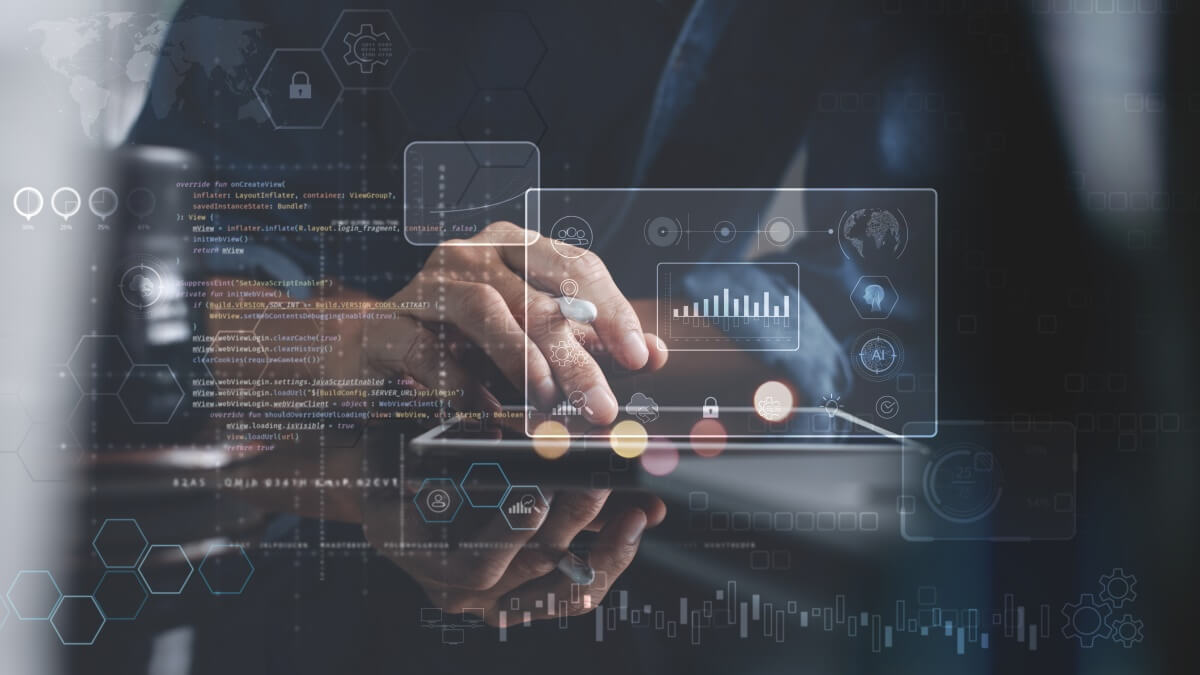The limitations of the cloud
While the cloud offers many benefits, it suffers substantial security and privacy problems, making Edge computing and Edge-based AI attractive options for many organizations.
Put simply, the cloud is a network of connected servers.
A server can be considered a computer that provides data or services to other computers.
The cloud doesn’t use just one or two. Instead, it relies on a system of thousands, typically stored in an enormous warehouse (or several hundred such warehouses).
These locations are known as cloud data centers.
Big companies typically manage and protect cloud data centers, including Apple, Google, AWS, and Azure.
One major problem with Cloud computing is that it puts data out of users’ hands.
Instead of keeping sensitive data close, cloud customers send their data to a large company with a data center that could be thousands of miles away.
This comes with privacy risks as cloud data centers are susceptible to hacking, not to mention that data is much more likely to be intercepted and interfered with when it travels long distances.
This article explores the limitations of cloud computing through the lens of privacy and security. It suggests that Edge computing (a distributed computing method that keeps data as close as possible to where it’s generated) has many security advantages that make it a highly appealing option.
Before we explore Edge solutions, let’s discuss why many people have reservations about security and privacy regarding cloud computing and cloud-based AI.
Why are companies worried about cloud security?
Despite what it sounds like, the cloud is incredibly physically secure.
But, unfortunately, its ease of use has turned out to be a double-edged sword.
While the cloud is very accessible and has led to the growth of new applications and databases, its ease of use has also resulted in complex configurations that are becoming increasingly difficult to monitor and manage.
The more complex a cloud configuration is to monitor, the more it’s susceptible to vulnerabilities.
This happens because when more tools and applications are stored in the cloud, more people require access, and it’s easier to grant access by unlocking some security tools (such as firewalls).
Unfortunately, attackers can also walk through these open doors, putting sensitive data at risk. These cloud attacks have led to significant breaches at Docker Hub and Instagram, to name just a few.
When people and organizations put their data in the hands of cloud companies, they open themselves up to these attacks.
Suppose companies don’t save files to a hard drive or implement an Edge computing or Edge AI strategy. In that case, they are sending sensitive data to another company, which could be saving their data thousands of miles away.
In these instances, keeping information safe now depends entirely on an external cloud computing organization.
The bottom line is that companies worry about cloud security due to concerns surrounding data breaches. They are also concerned because sensitive information is ultimately being logged and stored in a place that’s not in their direct control.
Also, privacy compliance and internal security audits are additional factors contributing to growing concerns surrounding cloud computing and the level of security it’s capable of providing.
The security risks of cloud computing
Unlike Edge computing and Edge AI, cloud-based solutions come with more security and privacy risks.
Cybercriminals can hack into cloud files by guessing security questions or bypassing passwords.
Worse yet, while the cloud does have decent security features, cybercriminals have developed techniques to exploit vulnerabilities in cloud services, including Azure and AWS.
Information can still be viewed even if cloud data isn’t stolen or published.
For example, governments can legally request information stored in the cloud, leaving it up to cloud service providers to decide whether to grant access.
Alarmingly, government agencies send tens of thousands of requests for user data to Microsoft, Google, and other cloud service providers each year.
Most of the time, these companies hand over at least some type of data, even if they still hold back the complete, original content.
In addition to issues with governments having access to private information and a loss of control over one’s data, other cloud security and privacy problems include:
- account or service hijacking
- data leakage
- insecure interfaces
- data loss
- Denial-of-Service (DoS) attacks
- technology vulnerabilities (particularly in shared environments)
Regardless of the exact nature of the threat, the cloud service provider a company decides to use matters because not all clouds are as secure as others.
The fact is that some cloud storage providers offer better privacy than others or may have specific security features that are years ahead of what their competitors have to offer.
For these reasons, it’s essential to determine if a cloud service is as safe as it seems.
But, most of the time, the safety offered by cloud companies boils down to technical reasoning that can only be understood if you have access to software engineering knowledge.
This can be incredibly frustrating when your customer’s sensitive data is on the line.
Edge computing and Edge AI enhance security and privacy
Now that we’ve covered the limitations of the cloud, let’s explore how Edge computing and Edge AI supply a viable computing and AI option that offers improved privacy and security.
Instead of relying on a centralized computing environment or cloud data center, Edge computing allows data processing and storage closer to the devices that initially generate the data.
When Edge computing is in use, there’s no need for data gathered from endpoints to travel to a centralized cloud to be processed and analyzed.
This means that data can be processed in real-time within the same environment it was created.
Edge AI, on the other hand, combines Edge computing and AI.
Edge AI harnesses the features and benefits of Edge computing, yielding impressive results in many areas and dramatically improving privacy and security for AI workloads.
Edge computing and Edge AI provide incredible data security and privacy precisely because data is processed locally rather than within centralized servers.
While this isn’t to say that Edge-enabled devices have no vulnerabilities, it does mean that there’s less data being sent to and from a server, meaning that there’s a less complete collection of data that hackers can pounce on at any given time.
Another advantage is that Edge devices tend to hold minimal amounts of data. So, even in a cyberattack, hackers can only get their hands on a small amount of data and not complete data sets.
In a cloud computing environment (or when cloud-based AI is in use), privacy can easily be compromised in an attack because cloud servers often contain complete information about events, locations, and people.
In contrast, because Edge computing only creates, processes, and analyzes the data required in a specific instance, other data that might compromise privacy in the event of an attack can’t be tampered with.
Let’s examine healthcare data as an example.
As discussed, in cloud computing, endpoint data tends to be combined with other data points that create a complete pool of information.
In a situation where Edge-enabled devices monitor and collect data regarding patients’ vital signs, for example, the results can be analyzed and stored entirely on the device.
The device only holds those readings and can’t lead hackers to other sensitive information.
However, if these devices were to send the data back to centralized servers with other stored information, and the servers were hacked, cybercriminals could gain access to all sorts of sensitive information about patients, severely compromising their privacy.
Edge computing and Edge AI distribute risk
When all an organization’s data must feed to a cloud server through a single channel, essential operating processes that depend on actionable data are highly vulnerable.
That’s why a single distributed denial-of-service (DDoS) attack can disrupt a multinational company’s operations.
The good news is that when a company distributes data analysis tools across the enterprise, they also distribute risk.
While some may argue that Edge computing expands the potential attack surface for would-be cybercriminals, it also diminishes the impact attacks can have on the organization.
Another vital security benefit is that when a company transfers less data, there’s less data at risk of interception. This is significant as data is most vulnerable when in transit.
Additionally, Edge computing and Edge AI help companies comply with data sovereignty and privacy regulations, such as America’s Health Insurance Portability and Accountability Act (HIPAA).
Companies need to consider their computing options carefully
As we’ve discussed, the cloud can get hacked; therefore, companies should carefully consider the information they’re sending and storing in the cloud to lessen the impact of potential data breaches.
Cybercriminals know that companies are relying on the cloud more than ever. If a hack were to take place, it could result in compromised data and compliance failures, leading to a loss of customer trust and substantial fines.
Ultimately, using the cloud for computing and AI purposes puts company data in other people’s hands.
If an organization has sensitive data they’d rather keep from prying eyes, Edge computing and Edge AI are certainly the way to go.
With the proper implementation, Edge computing and Edge AI increase data security by limiting data transmission over the network. What’s more, Edge solutions help put control over valuable data back in the hands of businesses.

